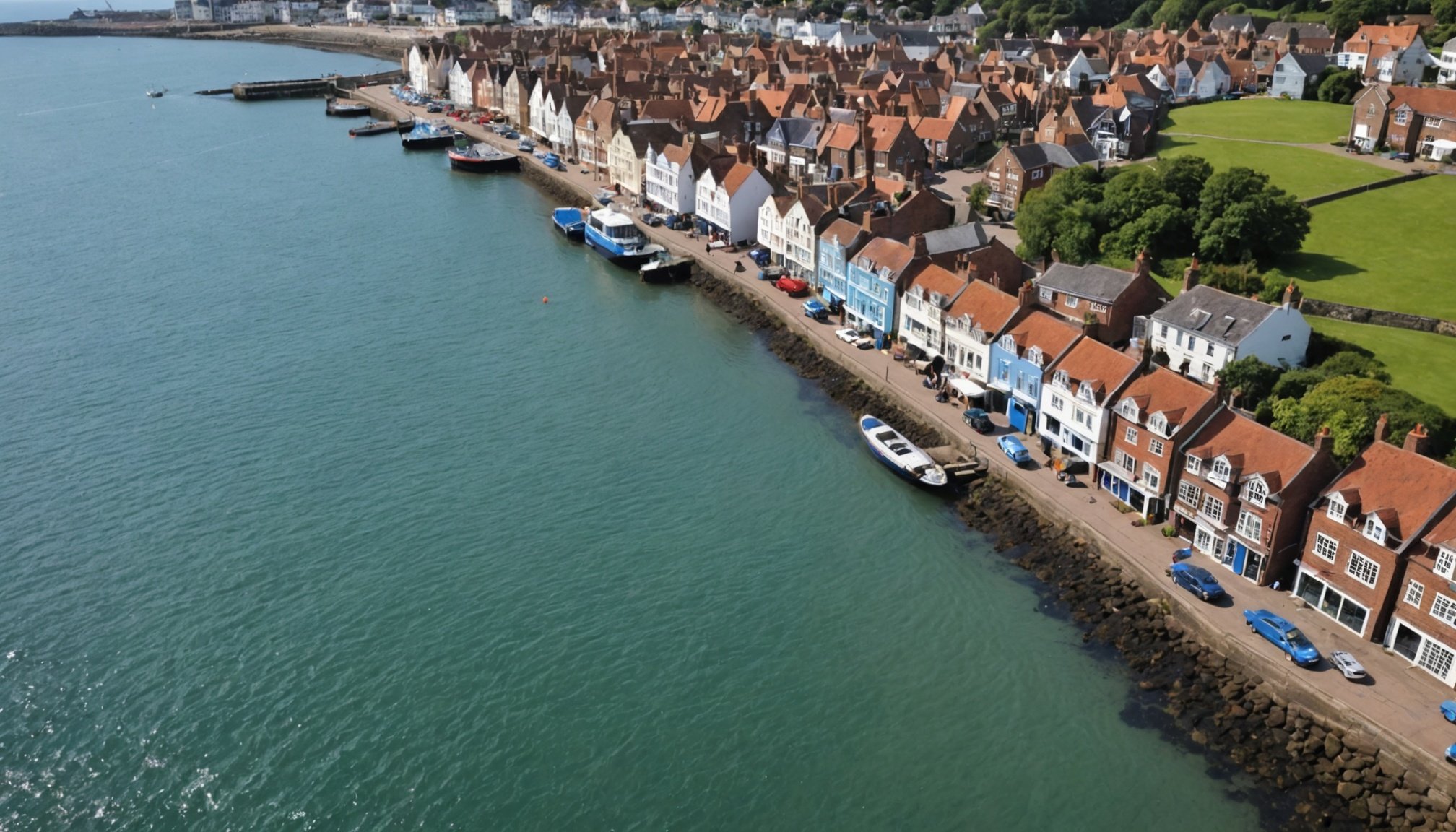Understanding the Unique Risks of Coastal Properties
Living near the coast presents both aesthetic appeal and distinct challenges. Properties in these areas face numerous coastal hazards, making understanding their potential impact imperative for homeowners. Key environmental risks include erosion, flooding, and severe weather events like hurricanes. These natural hazards can lead to increased insurance challenges, affecting both coverage availability and costs.
Climate change further exacerbates these issues since rising sea levels and more frequent storms drive up insurance costs. Insurers continually assess these threats, leading to higher premiums for coastal properties. Without proper insurance, homeowners risk significant financial losses in the event of a disaster.
Also to discover : Exploring How Surrey’s School Quality Shapes Property Prices: An In-Depth Analysis
Additionally, building and maintaining homes in coastal regions entail unique considerations. The corrosive salt air and high humidity require particular construction materials and techniques to ensure longevity and resilience. For instance, utilising materials resistant to rust and water damage can decrease maintenance needs over time.
Proactive homeowners often employ a combination of preventive measures to mitigate the risks. These include regular property assessments and updates to adhere to the latest building standards for coastal areas. By embracing these practices, homeowners can better manage their coastal property risks.
This might interest you : Key insurance considerations for properties adjacent to historic landmarks in york: a comprehensive guide
Navigating Local Regulations and Insurance Options
Understanding coastal insurance regulations is crucial for property owners trying to navigate the complex landscape of insurance costs and coverage. Local laws play a significant role in shaping these insurance policies, as they dictate the risks associated with owning coastal properties. Therefore, familiarising oneself with regional policy options can lead to better financial and risk management.
There are various types of insurance policies tailored for coastal properties. These include standard homeowners’ insurance, flood insurance, and windstorm coverage. Each offers distinct coverage and should be considered based on the property’s specific risk factors. For example, properties in hurricane-prone areas may require additional windstorm insurance.
Comparing coverage options from different insurers is an essential step in ensuring adequate protection. Some insurers offer more comprehensive plans that include prerequisite measures for damage prevention, such as using specific construction materials. Prospective policyholders should assess these features carefully and consider the insurer’s reputation and claim process efficiency.
Furthermore, community forums and government websites can provide insights on satisfying coastal insurance regulations and seeking advice from local experts. By undertaking thorough research, property owners can enhance their understanding of regulations and select the most suitable insurance options for their coastal homes.
Innovative Risk Mitigation Strategies
Increasing property resilience is vital for mitigating risks in coastal areas. One effective approach is incorporating better construction techniques. Utilising materials such as hurricane-resistant windows and reinforced doors can significantly bolster structural integrity. Homes built with elevated foundations and durable, rust-resistant materials stand a better chance against coastal elements.
Regular maintenance is equally important. Proactive measures like inspecting roofs for leaks, sealing cracks, and clearing gutters help prevent damage and, consequently, lower insurance costs. Scheduling annual check-ups with professionals ensures that potential issues are addressed before escalating into costly repairs.
Preventive measures extend beyond the individual household. Implementing community-based disaster preparedness programs creates a collective approach to risk management. Such programs foster resource sharing, offer evacuation plans, and coordinate safety drills. Neighbourhood collaborations can also lead to bulk purchasing discounts for protective materials and services.
Participating in local community resilience projects not only prepares residents for immediate risks but can also contribute to long-term cost savings. Engaged homeowners benefit from shared knowledge on property maintenance and mitigation techniques. As a result, they can make informed decisions, enhancing their ability to protect their investments and improve overall community safety.
Financial Strategies to Lower Insurance Costs
Finding ways to achieve insurance savings is crucial for coastal property owners. One effective strategy is leveraging discounts associated with risk-reducing improvements. Many insurers offer premium reductions for properties equipped with storm shutters, reinforced roofs, or upgraded flood defences. These enhancements not only lower insurance costs but also bolster protection against coastal hazards.
Understanding the role of deductibles is another key component. Opting for a higher deductible can reduce the premium, offering a cost-effective way to manage insurance expenses. However, it’s vital that property owners weigh the potential out-of-pocket costs in the event of a claim, ensuring it aligns with their financial capabilities.
Exploring financial alternatives, such as insurance co-ops or group policies, may also yield substantial savings. These options allow homeowners to pool resources, often leading to more favourable insurance terms. This collaborative approach can make coverage more accessible while alleviating some financial burden associated with high premiums.
By incorporating these financial strategies, coastal property owners can effectively manage insurance challenges. This involves actively seeking out opportunities to minimise costs while ensuring adequate coverage, allowing homeowners to safeguard their investments without excessive financial strain.
Case Studies and Success Stories
Exploring real-life examples of coastal property owners who have successfully navigated insurance challenges offers valuable insights. For instance, a community in Florida embarked on an initiative to enhance property resilience by advocating for the use of storm-resistant windows and reinforced doors. These successful strategies led to significant insurance savings for residents, demonstrating the power of collective action.
Another inspiring testament comes from a coastal neighbourhood in the United Kingdom, where homeowners collaborated to establish a community-based disaster preparedness program. This initiative included regular safety drills and bulk purchasing discounts for protective materials, resulting in decreased insurance costs and heightened community safety.
Analyzing these testimonial evidence instances highlights some important lessons. Primarily, pooling resources and sharing knowledge with neighbours can cultivate robust disaster preparedness while mitigating individual financial burdens. Furthermore, embracing innovative preventive measures fortifies properties against coastal hazards and positively impacts insurance costs.
Through these case studies, property owners can identify successful strategies that align with their unique circumstances and inform their risk management approaches. By learning from these examples, homeowners can effectively safeguard their investments and foster safer communities.
Resources and Tools for Homeowners
Navigating the challenges of owning a coastal property can be complex, but several resources and tools are available to assist homeowners in managing their investments effectively. Online calculators are invaluable tools for estimating insurance costs, providing insights into potential premium changes due to coastal hazards or preventive upgrades. These calculators help homeowners make informed decisions regarding insurance policies and risk management strategies.
A variety of educational materials specifically tailored to disaster preparedness and property management are available. These resources offer guidance on implementing effective preventive measures, such as reinforcing structures against hurricanes or managing flood risks. By leveraging this information, homeowners can increase their property resilience and potentially reduce insurance costs.
It’s beneficial to explore government and non-profit organisations offering assistance to coastal property owners. These platforms often provide detailed guides, policy updates, and expert advice on navigating local regulations and insurance options. They serve as a bridge to understanding the intricacies of coastal property ownership and enhance preparedness for natural hazards.
Embracing these resources equips homeowners with the knowledge and tools needed to safeguard their properties and investments, fostering long-term stability and security in coastal living environments.










